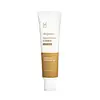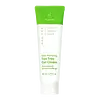What's inside
What's inside
 Key Ingredients
Key Ingredients

No key ingredients
 Benefits
Benefits

 Concerns
Concerns

No concerns
 Ingredients Side-by-side
Ingredients Side-by-side

Melaleuca Alternifolia Leaf Extract 78.4%
PerfumingGlycerin
HumectantButylene Glycol
Humectant2,3-Butanediol
Humectant1,2-Hexanediol
Skin ConditioningCentella Asiatica Extract
CleansingWater
Skin ConditioningAmmonium Acryloyldimethyltaurate/Vp Copolymer
Squalane
EmollientHydroxyacetophenone
AntioxidantCarbomer
Emulsion StabilisingEthylhexylglycerin
Skin ConditioningPanthenol
Skin ConditioningDipotassium Glycyrrhizate
HumectantTromethamine
BufferingInulin Lauryl Carbamate
Emulsion StabilisingSodium Surfactin
CleansingHouttuynia Cordata Extract
Skin ConditioningCamellia Sinensis Leaf Extract
AntimicrobialBeta-Glucan
Skin ConditioningMadecassoside
AntioxidantAsiaticoside
AntioxidantAsiatic Acid
Skin ConditioningMadecassic Acid
Skin ConditioningMelaleuca Alternifolia Leaf Extract 78.4%, Glycerin, Butylene Glycol, 2,3-Butanediol, 1,2-Hexanediol, Centella Asiatica Extract, Water, Ammonium Acryloyldimethyltaurate/Vp Copolymer, Squalane, Hydroxyacetophenone, Carbomer, Ethylhexylglycerin, Panthenol, Dipotassium Glycyrrhizate, Tromethamine, Inulin Lauryl Carbamate, Sodium Surfactin, Houttuynia Cordata Extract, Camellia Sinensis Leaf Extract, Beta-Glucan, Madecassoside, Asiaticoside, Asiatic Acid, Madecassic Acid
 Reviews
Reviews

Ingredients Explained
These ingredients are found in both products.
Ingredients higher up in an ingredient list are typically present in a larger amount.
1,2-Hexanediol is a synthetic liquid and another multi-functional powerhouse.
It is a:
- Humectant, drawing moisture into the skin
- Emollient, helping to soften skin
- Solvent, dispersing and stabilizing formulas
- Preservative booster, enhancing the antimicrobial activity of other preservatives
Ammonium Acryloyldimethyltaurate/Vp Copolymer (let's call it AAVC for short) is a synthetically created polymer. It's used as a film-forming agent and used to thicken the consistency of products.
AAVC is able to increase the consistency and viscosity of products due to its large molecule size. It also prevents ingredients from separating.
Ethylhexylglycerin (we can't pronounce this either) is commonly used as a preservative and skin softener. It is derived from glyceryl.
You might see Ethylhexylglycerin often paired with other preservatives such as phenoxyethanol. Ethylhexylglycerin has been found to increase the effectiveness of these other preservatives.
Glycerin is already naturally found in your skin. It helps moisturize and protect your skin.
A study from 2016 found glycerin to be more effective as a humectant than AHAs and hyaluronic acid.
As a humectant, it helps the skin stay hydrated by pulling moisture to your skin. The low molecular weight of glycerin allows it to pull moisture into the deeper layers of your skin.
Hydrated skin improves your skin barrier; Your skin barrier helps protect against irritants and bacteria.
Glycerin has also been found to have antimicrobial and antiviral properties. Due to these properties, glycerin is often used in wound and burn treatments.
In cosmetics, glycerin is usually derived from plants such as soybean or palm. However, it can also be sourced from animals, such as tallow or animal fat.
This ingredient is organic, colorless, odorless, and non-toxic.
Glycerin is the name for this ingredient in American English. British English uses Glycerol/Glycerine.
Learn more about Glycerin